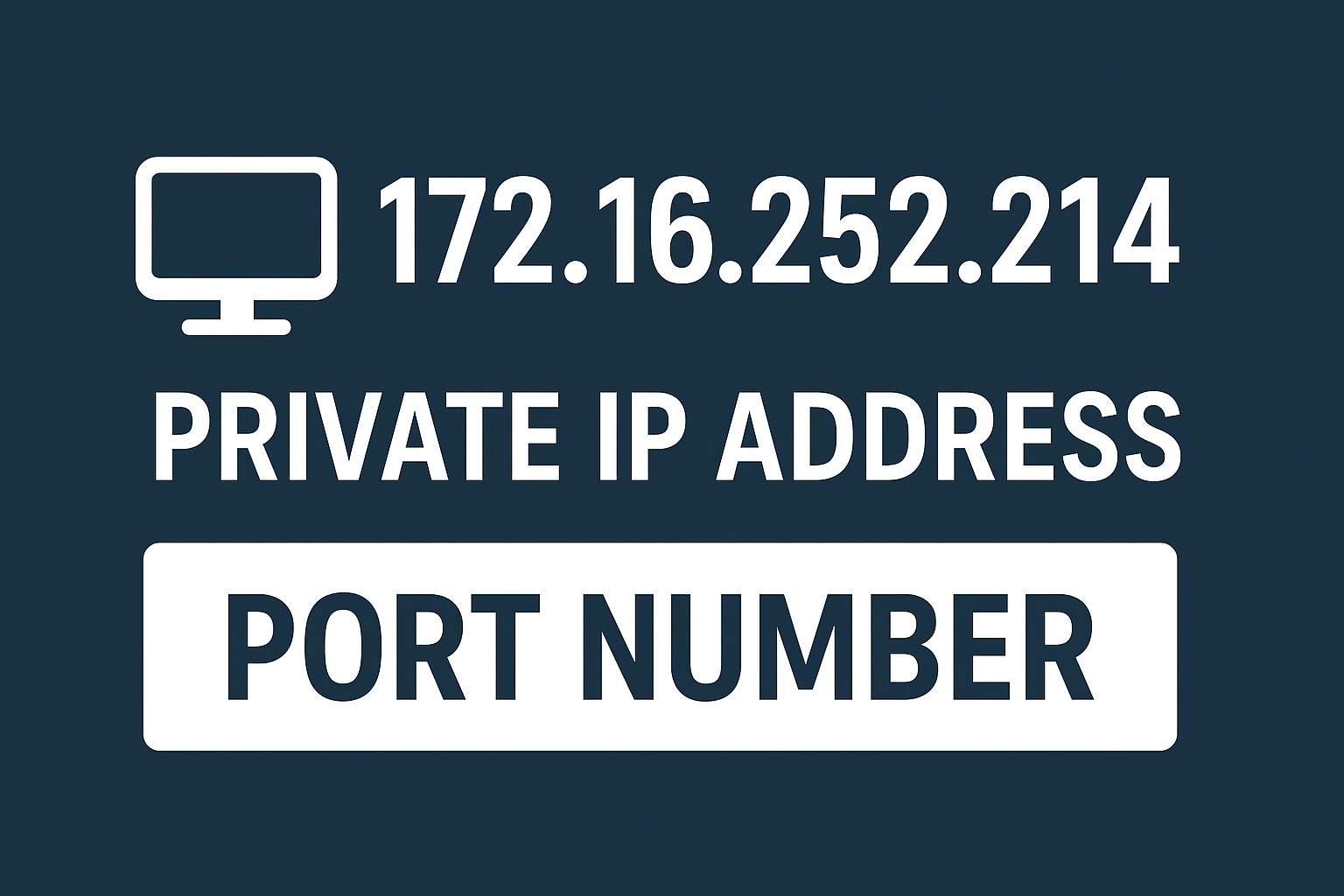When exploring computer networks, you might encounter unusual-looking combinations like 172.16.252.214:4300. At first glance, this might appear to be a random string of numbers, but in reality, it is a representation of two critical components in networking: an IP address and a port number. Together, they define a precise location for communication within a network. To truly understand the significance of this notation, one must break it down into its parts, explore the role of private IP addresses, investigate what port numbers do, and analyze how such a combination can be applied in real-world network configurations.
The Basics of IP Addresses
An IP address (Internet Protocol address) is a unique identifier assigned to each device connected to a network. It functions much like a mailing address for data packets, ensuring that information sent across a network reaches the correct destination. There are two main categories of IP addresses: public and private.
Public IPs are accessible over the internet and are globally unique, while private IPs are reserved for use within internal networks like home, business, or enterprise LANs (Local Area Networks). The IP address in our example, 172.16.252.214, falls into the private IP range defined by the Internet Assigned Numbers Authority (IANA). Specifically, addresses from 172.16.0.0 to 172.31.255.255 are allocated for private use, meaning that this address is not accessible directly over the public internet but can be used inside a controlled internal network.
Why 172.16.252.214 Is a Private IP
The 172.16.x.x range is part of the Class B private IP block. Organizations often use this range for corporate networks, testing environments, and virtual machine configurations. By design, private IP addresses provide a level of security because they are not routable on the public internet. Instead, devices with private IPs connect to the outside world through mechanisms such as NAT (Network Address Translation), which maps internal private addresses to a public IP address.
The specific address 172.16.252.214 could represent a workstation, a server, or a network device within an enterprise setting. Its exact role depends on the configuration of the network, but its private designation ensures that it is part of an internal structure rather than a direct internet endpoint.
The Importance of Port Numbers
While the IP address identifies the device, the port number identifies the specific service or application running on that device. In the example 172.16.252.214:4300, the colon separates the IP address from the port number. Here, 4300 is the port number.
Ports allow a single device to run multiple services simultaneously without confusion. For instance, a server could host a website on port 80, a secure connection on port 443, a file-sharing service on port 21, and a custom application on port 4300. Each port acts like a “doorway” through which data can be sent or received.
Port numbers range from 0 to 65535, with the first 1024 being considered “well-known ports” reserved for standard services like HTTP (80), HTTPS (443), and SMTP (25). Port 4300 does not fall into this standard range, which means it is most likely a custom or application-specific port configured by a network administrator or developer.
Understanding 172.16.252.214:4300 in Context
When an administrator or user specifies 172.16.252.214:4300, they are pointing to a specific service running on a device with the IP address 172.16.252.214 and listening on port 4300. This could be part of a web application, a database service, or even a proprietary tool designed to serve a unique purpose within the network.
For example, in a corporate setting, port 4300 might be assigned to an internal API service, a development tool, or a specialized piece of software. Developers sometimes choose non-standard ports like 4300 to avoid conflicts with common services and to add an extra layer of obscurity. In testing environments, custom ports are especially valuable because they allow multiple applications to run side by side without interfering with one another.
Security Considerations
Although private IPs like 172.16.252.214 are not directly reachable from the internet, they are still susceptible to internal security threats. Misconfigured services on port 4300 could expose vulnerabilities that attackers inside the network might exploit. For this reason, IT administrators implement access control lists, firewalls, and monitoring tools to track unusual activity on non-standard ports.
Moreover, if NAT or port forwarding is used to expose a private service to the public internet, security becomes even more critical. If 172.16.252.214:4300 were mapped to a public-facing IP and port, external attackers could potentially target it. Best practices include using strong authentication, encrypting traffic, regularly patching software, and limiting access through VPNs or strict firewall rules.
Use Cases of Custom Ports Like 4300
Custom ports such as 4300 are frequently used in scenarios like:
- Development Environments – Developers may run test versions of applications on ports like 4300 while the production version runs on standard ports.
- Proprietary Software – Some vendors design their software to listen on specific non-standard ports, ensuring it doesn’t conflict with commonly used services.
- Internal APIs and Tools – Enterprises often run internal APIs on private networks, using non-standard ports to organize different services.
- Load Balancing and Testing – Non-standard ports allow multiple instances of the same application to be run on a single server for testing or load distribution.
Each use case demonstrates why port 4300 might have been chosen in this example: it avoids overlap with major services while offering flexibility.
Troubleshooting and Connectivity
If someone attempts to connect to 172.16.252.214:4300, they would typically use a client application designed to communicate with the service on that port. For instance, if it were a web service, they might access it through a browser using a URL like:
http://172.16.252.214:4300
If the service is running and the network is configured properly, the connection would succeed. However, if the service is down, blocked by a firewall, or misconfigured, the connection attempt would fail. Network administrators use tools like ping, traceroute, telnet, or netcat to test connectivity and verify whether a service is responding on the specified IP and port.
Practical Example in a Workplace
Imagine a company running an internal project management system for developers. Instead of exposing it publicly, the IT team configures the service on 172.16.252.214:4300 inside the corporate LAN. Developers working within the company’s VPN can connect directly to the application by entering this address in their browser. Meanwhile, outsiders cannot access it since the IP is private and protected by network rules.
This ensures security, while also allowing flexibility for developers to work on a specialized system without interfering with publicly accessible services.
Conclusion
The notation 172.16.252.214:4300 may look cryptic at first glance, but it represents a fundamental concept in networking: combining an IP address with a port number to direct traffic to a specific service. The IP portion, 172.16.252.214, falls within the private address space reserved for internal networks, while the port 4300 likely corresponds to a custom or application-specific service.
Together, they form a precise target within a private network environment, enabling controlled communication between devices and services. Understanding private IPs, port numbers, and their security implications is essential for anyone working with networks, from developers and system administrators to cybersecurity professionals. In today’s interconnected world, such knowledge ensures both functionality and protection in digital infrastructures.








